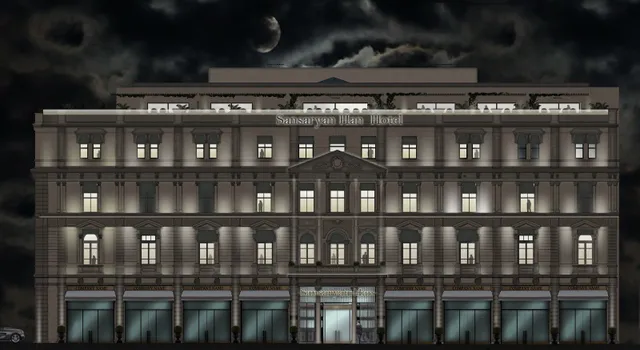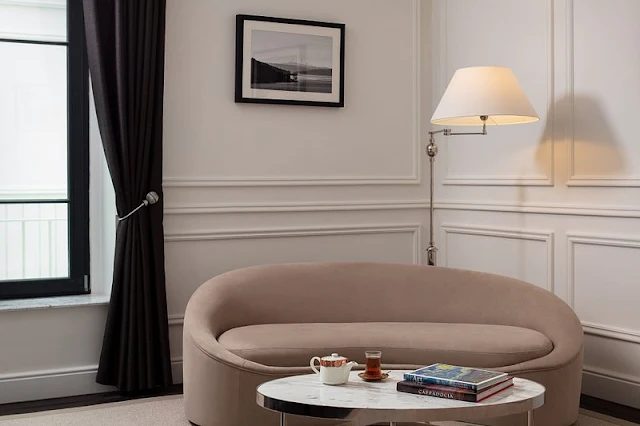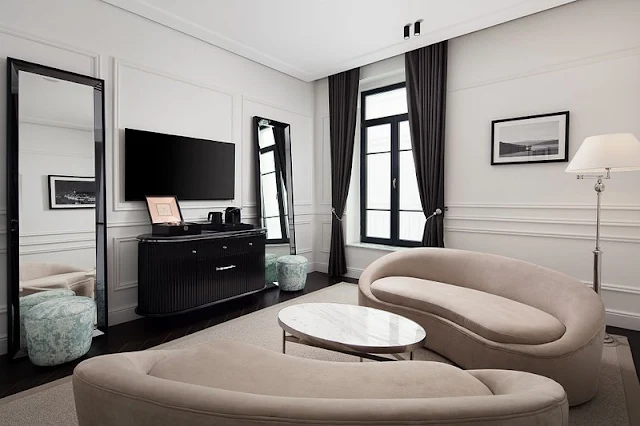Situated in the heart of Istanbul's historic Sultanahmet district, just steps away from iconic landmarks like the Hagia Sophia, Topkapi Palace, and the Grand Bazaar. The hotel is also conveniently located near major transportation hubs, including the Sirkeci tram station and the Eminönü ferry terminal.
Facilities: 51 elegantly appointed rooms and 12 suites, all featuring luxurious amenities and stunning views of the city or the courtyard. A rooftop terrace with panoramic views of the Bosphorus Strait and the Old City. A hammam-style spa offering traditional Turkish baths and treatments. A state-of-the-art fitness center. An elegant restaurant serving Turkish and international cuisine. A stylish bar with an extensive selection of drinks. A library with a curated collection of books about Istanbul's history and culture.
Developed by the Turkish company Garanti Koç Holding, in partnership with Marriott International. The Sanasaryan Han was originally built in the 17th century as a caravanserai, a traditional Ottoman inn that served as a resting place for travelers. The building was meticulously restored and transformed into a luxury hotel, preserving its historical character while incorporating modern amenities. The hotel's name pays homage to the Sanasaryan family, who owned the caravanserai for centuries. The project was a major investment, costing over $100 million to complete. The hotel has been praised for its blend of history and luxury, and has quickly become a popular destination for discerning travelers.
Architect by Emre Arolat Architects, known for their sensitive restoration projects and modern interpretations of traditional architecture. Design concept a harmonious blend of Ottoman architectural elements and contemporary design principles. The original caravanserai structure would be meticulously preserved, showcasing its historical character through exposed stonework, arched doorways, and courtyards. Modern interventions would be subtle and respectful, using clean lines, glass elements, and natural materials to create a sense of light and openness.
Interior Design by Autoban, renowned for their luxurious and innovative hospitality interiors. Design theme east meets West," celebrating Istanbul's unique cultural crossroads. Rich Ottoman textiles and patterns would be juxtaposed with sleek contemporary furniture and artwork. Local artisanship would be showcased through hand-woven rugs, intricate mosaics, and custom lighting fixtures. The overall ambiance would be elegant yet inviting, reflecting the city's vibrant energy.
Hidden Treasures the hotel could unveil hidden historical artifacts or passages discovered during the restoration process, offering guests a glimpse into the building's rich past. Modern Caravanserai guests could experience a modern interpretation of the traditional caravanserai concept, participating in cultural workshops, cooking classes, and storytelling sessions led by local artisans and experts. Time Travel the hotel could offer immersive experiences that transport guests back in time to Ottoman-era Istanbul, featuring period costumes, traditional music, and historical reenactments. Local Connections the hotel could partner with local artists, musicians, and businesses to create a unique and authentic Istanbul experience for its guests.
The rooftop terrace could host stargazing events with local astronomers, offering breathtaking views of the city and the night sky. The hotel could feature a traditional Turkish hammam with a modern twist, offering guests a luxurious and rejuvenating experience A library curated by a local historian could offer guests a chance to delve into Istanbul's rich history and culture. The hotel could partner with a local NGO to support cultural preservation efforts in the city.


































No comments:
Post a Comment